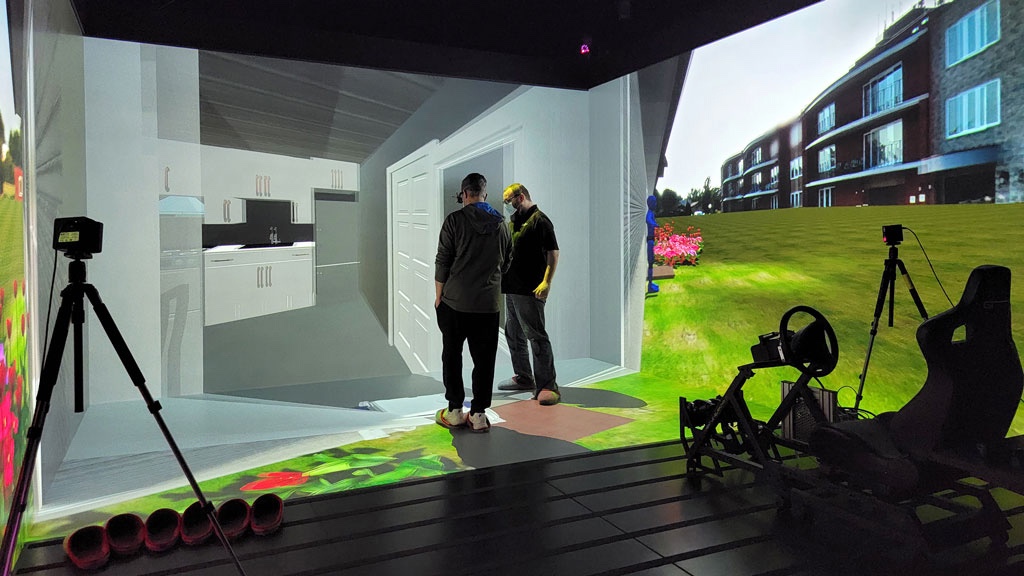Habitat for Humanity of Windsor-Essex has announced it will be constructing what it’s billing as Canada’s first 3D printed residence, to be located in Leamington, Ontario — just across the border from Detroit. Habitat will be partnering on the project with the University of Windsor-Essex and InvestWindsorEssex (IWE), a nonprofit development organization managed by the county of Essex and the city of Windsor. Some funding is also being provided by the Canada Mortgage and Housing Corporation’s Innovation Fund.
Habitat, of course, is one of the world’s most far-reaching nonprofits, as well as one of America’s largest private homebuilders. The 501(c)(3) organization has also quickly become one of the leading global adopters thus far of additive construction (AC) technology. Since last fall, Habitat has printed houses in multiple U.S. states, as well as funded a company printing houses in India.
Another company, Horizon Legacy Group, also announced last fall, and again this past March, that it was building Canada’s first 3D printed residence. Horizon is planning on building an entire 3D-printed community, however, so it’s possible Habitat, which expects to finish this project by the end of summer, will be done first. Ultimately, the homes will be part of a larger residential community managed by the Bridge Youth Resource Center, a nonprofit for homeless individuals aged 14 to 24.

Habitat will be printing a group of four tiny homes within the community, each one about 500 square feet. This is more similar to the most recent project it has collaborated on in India — involving houses that were about 700 square feet — rather than the most recent projects the organization has partnered on in the U.S., which were substantially larger. It’s unclear, as yet, what machine the homes will be printed on, but on the U.S. projects, Habitat and its partners used COBOD’s BOD2 printer.
What’s unique about this project is that IWE used CAD models to create a virtual reality (VR) cave for the homes that Habitat will build, the main purpose of which is to anticipate and revise any potential flaws in the design ahead of time. To create the simulation, IWE team fed the initial CAD drawings of the homes into Unity, a software platform originally designed for making video games, but which has also, over time, spread into a variety of industries, including architecture and construction. Aside from facilitating customization, VR could significantly expedite the lengthy and rigorous approval process for homebuilding, according to IWE’s president and CEO, Stephen Mackenzie.

Depending on whether or not tiny houses and other prefab houses in general continue to take off, as well as, similarly, to what exact extent AC techniques end up being adopted by the larger homebuilding industry, the construction sector could turn into an unexpected catalyst for 3D printed mass customization. This would only happen, if the 3D-printed housing sector also succeeded at making more affordable homes more widely available, which is of course a far more critical goal. But, if that does eventually happen, one additional, possible effect of this could be the “democratization” of customizing your home, which at this point tends to be something that’s exactly as possible as you are wealthy. People who rent their home or apartment in America, for instance, often have very little legal right to change anything at all about their living quarters. If 3D printed homes end up making housing more affordable, it would likely also make customizing your house more affordable.
Aside from this, the most promising aspect of the project is, as IWE’s president noted, the potential for speeding up the process of safe, affordable housing being made available. This is just as true in Canada, one of the most sparsely populated countries in the world, as it would be anywhere else. One trade-off for lower population density is greater difficulty and expense in building houses, meaning that if this project is a success, Canada could end up being a logical market for the AC sector to find a foothold in.
Subscribe to Our Email Newsletter
Stay up-to-date on all the latest news from the 3D printing industry and receive information and offers from third party vendors.
You May Also Like
Precision at the Microscale: UK Researchers Advance Medical Devices with BMF’s 3D Printing Tech
University of Nottingham researchers are using Boston Micro Fabrication‘s (BMF) 3D printing technology to develop medical devices that improve compatibility with human tissue. Funded by a UK grant, this project...
3D Printing Webinar and Event Roundup: April 21, 2024
It’s another busy week of webinars and events, starting with Hannover Messe in Germany and continuing with Metalcasting Congress, Chinaplas, TechBlick’s Innovation Festival, and more. Stratasys continues its advanced training...
3D Printing Webinar and Event Roundup: March 17, 2024
It’s another busy week of webinars and events, including SALMED 2024 and AM Forum in Berlin. Stratasys continues its in-person training and is offering two webinars, ASTM is holding a...
3D Printed Micro Antenna is 15% Smaller and 6X Lighter
Horizon Microtechnologies has achieved success in creating a high-frequency D-Band horn antenna through micro 3D printing. However, this achievement did not rely solely on 3D printing; it involved a combination...





























